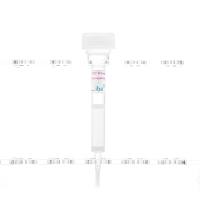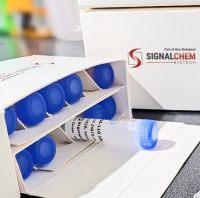As discussed in Chapter 4 , exoglycosidases are useful reagents for the structural determination of glycoconjugates. Their anomeric, residue, and linkage specificity for terminal monosaccharides have been used to assess monosaccharide sequence and structure in a variety of glycoconjugates (1 ). Their usefulness depends on the absence of contaminating exoglycosidases and an understanding of their specificity. Digestions of oligosaccharides with exoglycosidases give two classes of products: monosaccharides and the shortened oligosaccharides. Most assays of such reactions have monitored the reaction by following oligosaccharides that are labeled at their reducing ends. In these assays, after exoglycosidase digestion the shortened oligosaccharide retains the label at its reducing end. The other digestion product, the released monosaccharide, does not carry a label and thus cannot be quantified. Additionally, identification of any other monosaccharide that could be the result of a contaminating exoglycosidase activity would not be possible. Quantitative measurement of all products (all released monosaccharide[s] as well as the shortened oligosaccharide product) would be useful because it would enable the determination of any contaminating exoglycosidase activities by determining the extent of release of other monosaccharides. High pH anion exchange chromatography with pulsed amperometric detection (HPAEC-PAD) detects the appearance of monosaccharide product(s), the shortened oligosaccharide product(s) as well as the disappearance of the oligosaccharide substrate(s) in a single chromatographic analysis without labeling. Thus, HPAEC-PAD has been used extensively to monitor the activities of several different exoglycosidases on glycocoqugates, usually using the CarboPac PA1 column to separate the digestion products (see refs. 1 –8 ).






